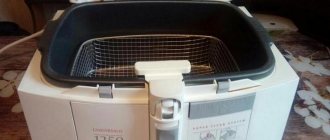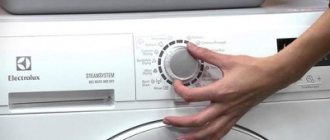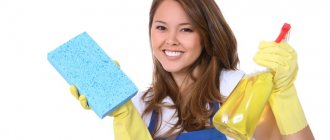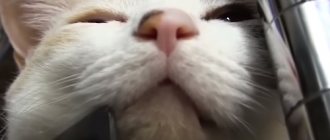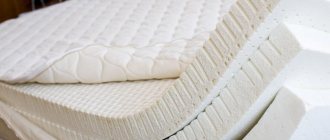Features of a tray with a grid
To make the task easier for owners, a special toilet was invented for cats and cats, in which the pet feels free. But why is it so unusual, this tray for a pet?
Most owners choose closed toilets, where pets feel private. On the one hand, this is suitable for shy cats who hide from prying eyes. On the other hand, the litter inside does not spill out and the room where the cat litter is located remains clean. But there is also a drawback: not all cats like to sit in a closed toilet. And that’s why some kitties categorically refuse to visit such a “outhouse”.
What is typical for a tray with a grid?
- First of all, it is a lightweight and convenient plastic design that fits in any part of the apartment and can be carried without any problems if necessary.
- A tray with a grid differs in that the filler is located at the very bottom, in an area inaccessible to cat paws. And thus allows you to maintain cleanliness while having an animal in the house. It is logical that if you cannot reach it, the cat will not scatter it, because there is nothing to scatter.
- A convenient grille, which is installed on top, allows the pet to do its cat “business” without hindrance. After this, he will be able to safely leave the toilet until the next time.
Video “The Right Choice”
In this video you will learn how to choose a toilet for your pet.
Sorry, there are no surveys available at this time.
Was this article helpful?
Thank you for your opinion!
The article was useful. Please share the information with your friends.
Yes (66.67%)
No (33.33%)
X
Please write what is wrong and leave recommendations on the article
Cancel reply
Rate the benefit of the article: Rate the author ( 6 votes, average: 4.00 out of 5)
Discuss the article:
How to disinfect cat litter?
If the tray is new and cleaned regularly, then it practically does not emit unpleasant odors. But over time, microscratches form in the plastic bottom, into which particles of urine, feces and dust become clogged. The question arises: how to wash the tray without smelling?
Modern means
Household and pet stores sell special products for cleaning cat litter boxes and eliminating unpleasant odors. Why is it better to use them for disinfection purposes?
- They do not cause allergies in pets and are safe in case of licking.
- Eliminate stubborn urinary stone stains on the bottom and walls.
- They have a neutral or pleasant smell for cats, which means that animals will not refuse to go to the tray after cleaning.
- Does not leave scratches.
- Eliminates odors of urine and feces.
The only drawback of modern products is the high price (500-800 rubles) compared to ordinary soap or baking soda.
Good brands include Hartz and Joypet sprays, Super Benek powder, Mr. plaque and urinary stone cleaner. Fresh. The last two products are inexpensive.
Common Home Remedies
How to disinfect a cat's litter box if your budget is limited or you're just too lazy to go to the store? You can use regular detergents:
- laundry or baby soap (grate the shavings and dissolve in water);
- liquid soap;
- a mild detergent, such as delicates powder;
- dishwashing liquid;
- baking soda - 2 tablespoons per 200 ml of water.
It is important to choose a product without a strong odor, and at the end, thoroughly rinse the cat’s litter box in clean water, preferably several times. Cats especially do not like the aromas of citrus and coniferous trees. If the smell remains on the walls, the pet will pass by its toilet and relieve itself somewhere in a corner or on the carpet.
We recommend: How to properly dissolve dried epoxy resin and what is needed for this?
What absolutely cannot be used for disinfection?
- products containing chlorine - there is a high probability of poisoning when licked and inhaled;
- vinegar - most likely, due to the pungent smell, the cat will prefer another toilet place to the tray;
- powders like "Pemolux" - leave scratches on the plastic surface of the bottom.
Don't forget to clean the area around the tray. After relieving itself, the pet often digs into the litter: lumps fly to the floor, and dust rises into the air. Dirt near the toilet may be one of the reasons why a cat has a desire to shit in the apartment.
Why do you need a grille?
This accessory has a practical meaning. The filler is poured strictly under the grate, as it absorbs urine. The excrement will remain on top: the owner only needs to remove the part to rinse it under running water.
Some owners try to avoid mesh, citing the cat's physiology as an excuse. In their opinion, the accessory interferes with burying animal waste products, which means it will certainly cause discomfort. In the future, such a solution creates a whole wave of problems: the pet scatters the litter, dirt quickly accumulates and cleaning turns into a daily chore.
Different types of cat litter
Washing the cat litter box: procedure
To clean your cat's litter box you will need the following things:
- trash bag or regular bag;
- scoop with mesh bottom;
- latex gloves;
- sponge with a hard surface;
- paper napkins or towels;
- detergent.
We also recommend purchasing a respiratory mask at the pharmacy. The fact is that if you inhale dust while cleaning a cat's litter box, there is a risk of contracting toxoplasmosis.
Toxoplasma are parasitic protists that live in the intestines of cats. The disease most often occurs without symptoms. It is especially dangerous for pregnant women: it can lead to miscarriage or the development of mental retardation in the child. In Russia, about 20% of the population is infected with toxoplasmosis.
Now let's start cleaning the cat's litter box. The procedure is as follows:
- Wear rubber gloves and a protective mask.
- If there is feces in the tray, remove it with a scoop and flush it down the toilet.
- Empty the used dirty litter into a trash bag and throw away. Some cat owners immediately after cleaning wrap the tray in a bag, and a week later they roll up the latter and take it out of the house. This way, the filler does not stick to the walls of the tray, which saves a lot of hassle. The problem is that not all cats like to have their litter box rustling because of the bag.
- Place the cat's litter box in the bathtub. Point the shower hose at it and turn on the maximum hot water pressure.
- When the toilet is completely full, turn off the shower. Take a scoop and scrape off any remaining filler from the sides and bottom. Pour the liquid down the toilet.
- Refill the tray with clean water. Add disinfectant. Leave for 5-10 minutes.
- Use the rough side of the sponge to give the tray a final clean. Flush the liquid back into the toilet.
- Rinse the cat litter in clean water.
Recommended: The Best Approach to Keeping Your Workplace Clean
Cat owners often make the mistake of pouring litter into the tray immediately after washing. Because of this, the particles swell and lose their ability to retain unpleasant odors. What is the right thing to do? You need to wipe the tray with paper napkins and let it dry completely (wait 2-3 minutes).
How to train a pet?
Preparing the toilet is only half the battle, since the other half comes from teaching your cat to go there to do its “business”. This works best when you have a small kitten.
- So, first of all, select a secluded place for the tray where the animal will feel comfortable.
- After this, you can put the cat in the tray several times a day. At the same time, make digging movements with its paws. Whenever you have the opportunity, watch the kitten and if you notice that the baby is acting restless, you can put it in the tray. If the kitten did his business there, be sure to reward him. Well, if the little cat did go the “wrong way,” you need to show the puddle to the baby and say something like: “Ugh” or “No way.” Gradually he will understand that he needs to go to the toilet in a certain place.
- If you have an adult cat, toilet training will be a little more difficult. Usually an animal that already has established habits has difficulty unlearning them. But even so, the situation is not hopeless. A cat is trained in much the same way, however, there are times when a pet, for some reason, purposefully relieves itself in another place. You can try to move the cat litter to where the cat does her business, and, quite possibly, the problem will be solved.
The main thing is not to frighten your pet and do not scold too much if the cat or kitten suddenly does something wrong. In the end, the pet will learn to use such a wonderful technique.
How to wash, how to clean
Hygienic procedures are mandatory when using filler and without it. In the second case, you will have to clean the litter box after each time your pet goes to the toilet.
If the attribute is not taken care of, then one of the consequences is an unpleasant odor that will quickly spread throughout the entire apartment.
But the tailed pet will begin to regularly look for new places to relieve its natural needs, since the smell of excrement scares them away.
To clean your cat's litter box, you will need disinfectant (eco-friendly) detergents, a soft brush and paper towels.
Procedure. Everything will take no more than five minutes.
- The used filler is sent in a plastic bag.
- Having unfastened the removable mesh, the base is washed under warm water.
- Apply or spray detergent onto the tray and leave for a few minutes. Then the base is cleaned with a brush.
- The removable grate is cleaned in warm water.
Tray cleaner
Choosing a detergent
The most important criterion is the absence of strong odors. Be careful when using toilet bowl cleaners. Many of them have a pungent “aroma” that can scare away a cat.
As a result, the pet will have no choice but to go looking for a more comfortable place to go to the toilet.
Acid-containing products effectively fight urinary stones, which settle on the surface of the tray over time. An analogue of these is ordinary vinegar, but it only eliminates the smell and is not suitable for regular cleaning.
Eco-friendly disinfectants are the best option. They smell nothing and contain virtually no chemicals.
